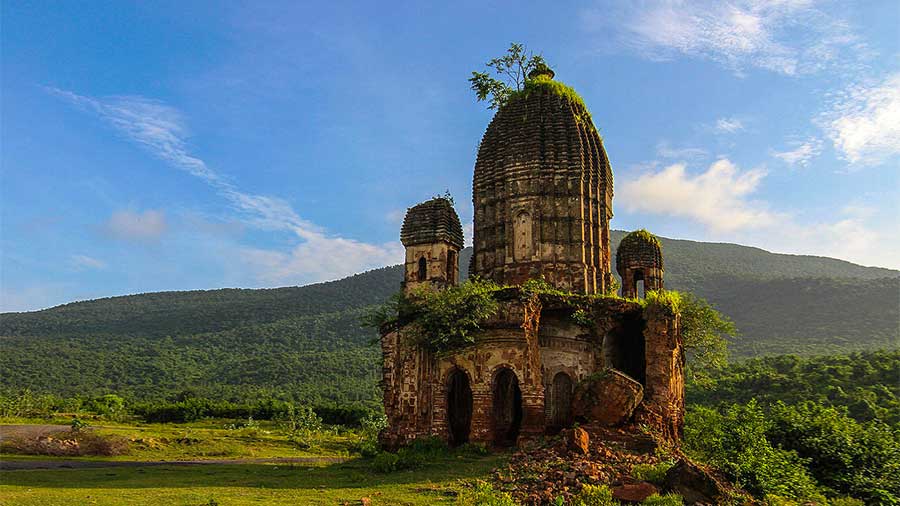From swift flowing rivers meandering past lush green hills to rocky outcrops towering above thundering waterfalls — Purulia has it all. The western most district of West Bengal is a nature’s paradise but it does have its share of history. Numerous ruined temples dot the entire landscape of the district. Also Purulia has its share of intangible heritage, the famous masked dance of Chhau. In 2010, Chhau was inscribed in the UNESCO’s Representative List of the Intangible Cultural Heritage of Humanity and has also obtained the Geographical Identification (GI) tag.
Chhau is a semi-classical dance form of eastern India, which combines both folk and traditional forms along with a dash of martial art. Apart from Purulia, Chhau is also practiced in Seraikella (Jharkhand) and Mayurbhanj (Odisha). The three versions differ considerably and apart from the Mayurbhanj version, the other two are performed with decorative masks.
Welcome to Mukhosh Gram
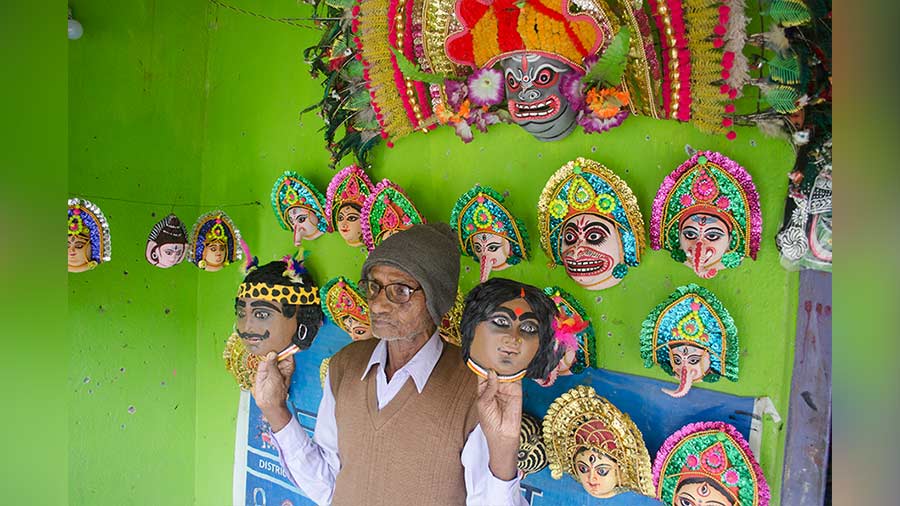
An artist showcases his creations
Charida is a sleepy hamlet lying in the shadows of the mighty Ayodhya Hills. Popularly known as Mukhosh Gram, it is where the Chhau mask makers of Purulia reside. Almost a few hundred families in the village are involved in the art of mask making and have been doing this for generations. Artists’ workshops are found on both sides of the road. Elaborately decorated masks are displayed on the outer walls of the workshop. An angry glance from a demon mask welcomes visitors into the small but elegantly decorated workshops.
The art of mask making
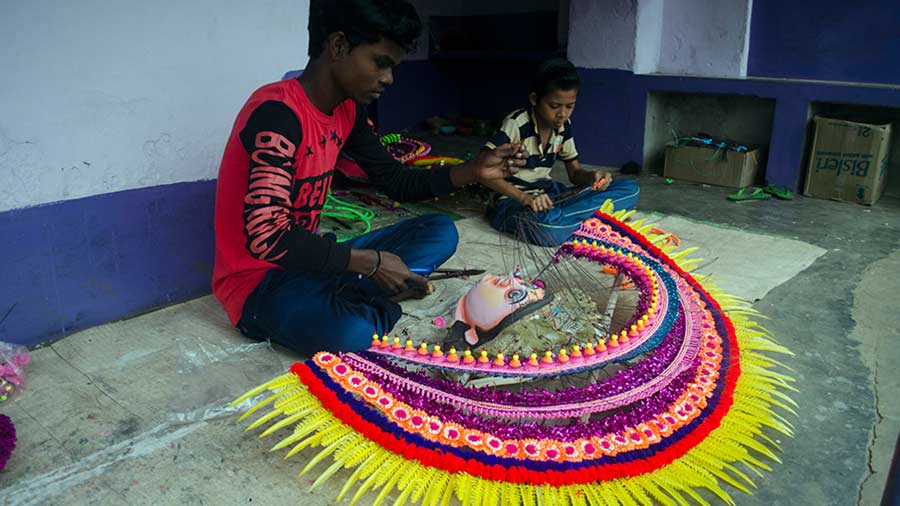
An artist adds finishing touches to a mask in Charida
The main process of mask making has not changed much. First, eight to 10 layers of soft paper, immersed in diluted glue, are pasted one after another on the mould. A special layer of mud and cloth is applied and the mask is then sun-dried. Once the mask comes out of the mould, facial features are added by hand using clay. After this, colours are applied and the masks are decorated with beads, ribbons, artificial flowers and leaves. Finally holes are drilled for the nose and eyes to complete the process.
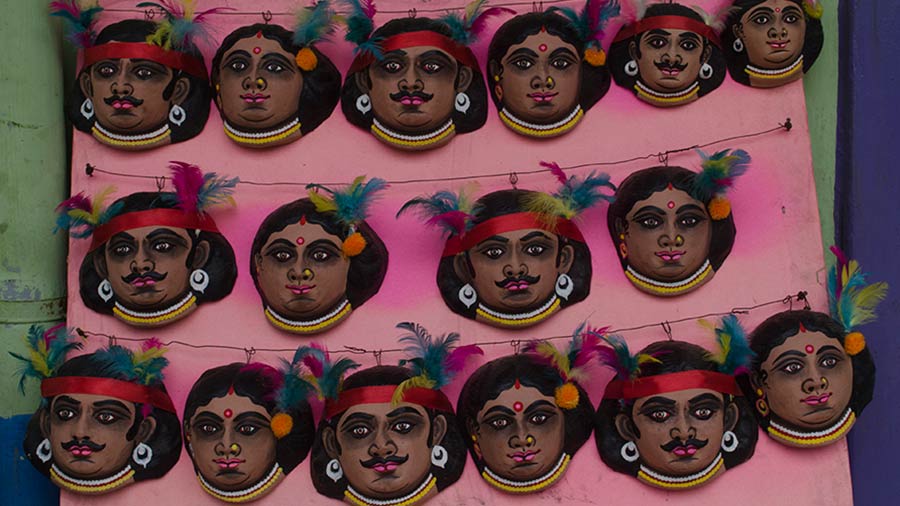
Smaller mask are more in demand now for home decoration
Over the years, the Chhau mask has gone through several changes. There is a drastic change in raw material. The old decorative materials like reeds and ropes have largely been replaced by plastic. The natural colours have given way to synthetic paints. The artists are now more into making smaller and less elaborate masks. These small masks are ideal for display on the walls of a small apartment. They come at pocket-friendly prices and have a huge demand.
Masks for all
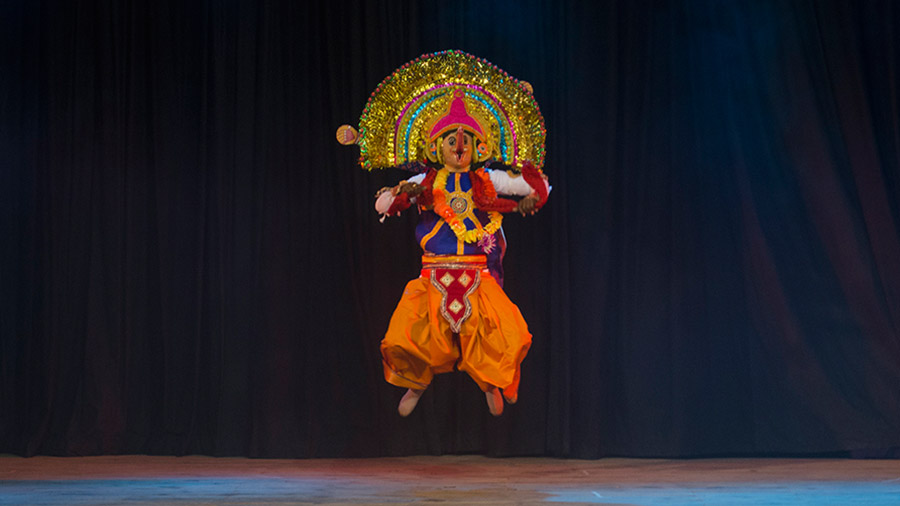
The dance form has become an integral part of many social functions across big cities of eastern India
Accompanied by beating drums, the dancers enact episodes from epics including the Mahabharata and the Ramayana, local folklores and are also into abstract themes now. The good news about Chhau dance is that, unlike other traditional arts, this art is constantly evolving and growing.
Members outside the community are now taking this art as a profession. The all-male dance form has now been taken up by several young girls. The dance form has become an integral part of many social functions across big cities of eastern India. The mask makers are gradually making inroads into the city and selling their wares at different fairs all through the winter.

